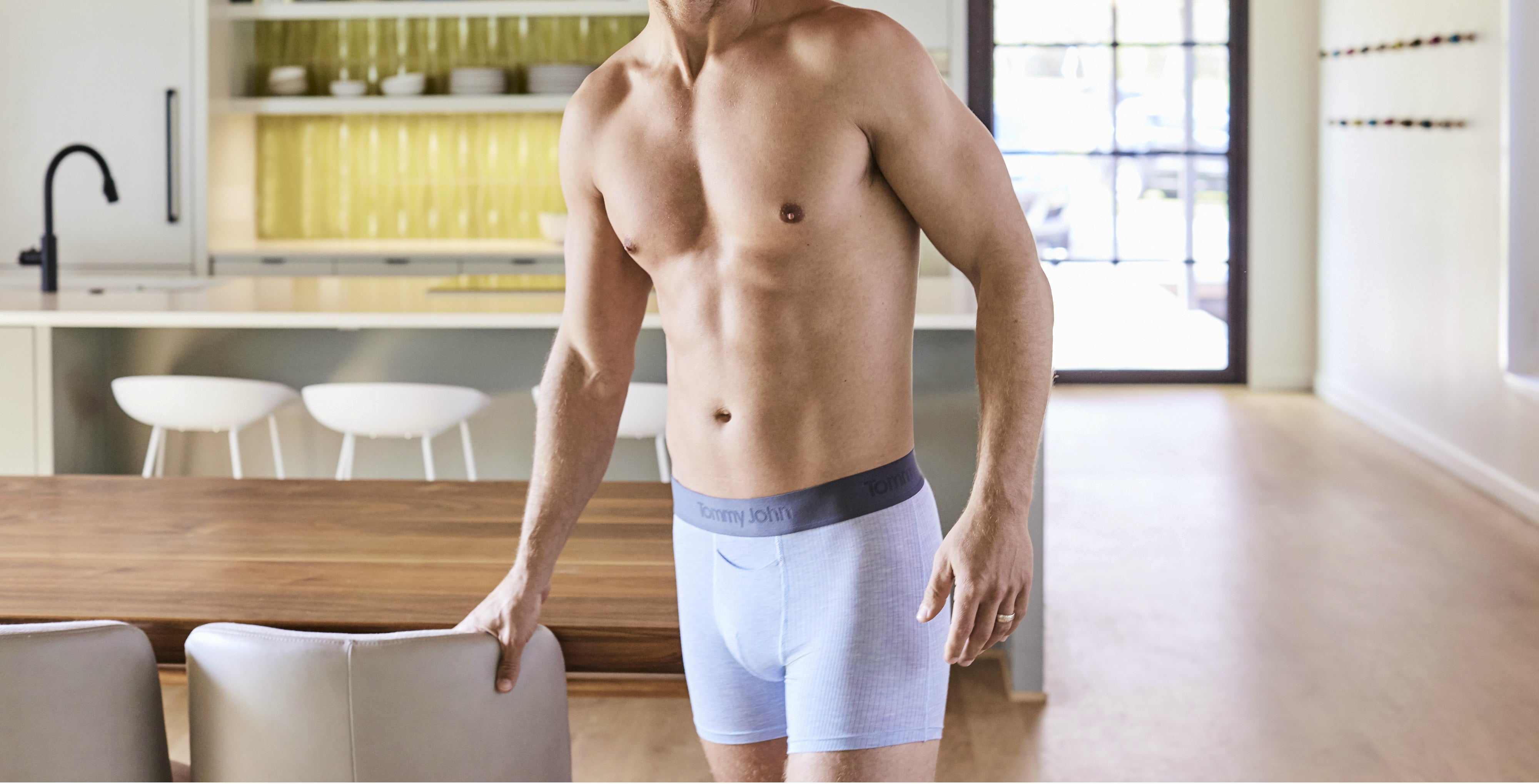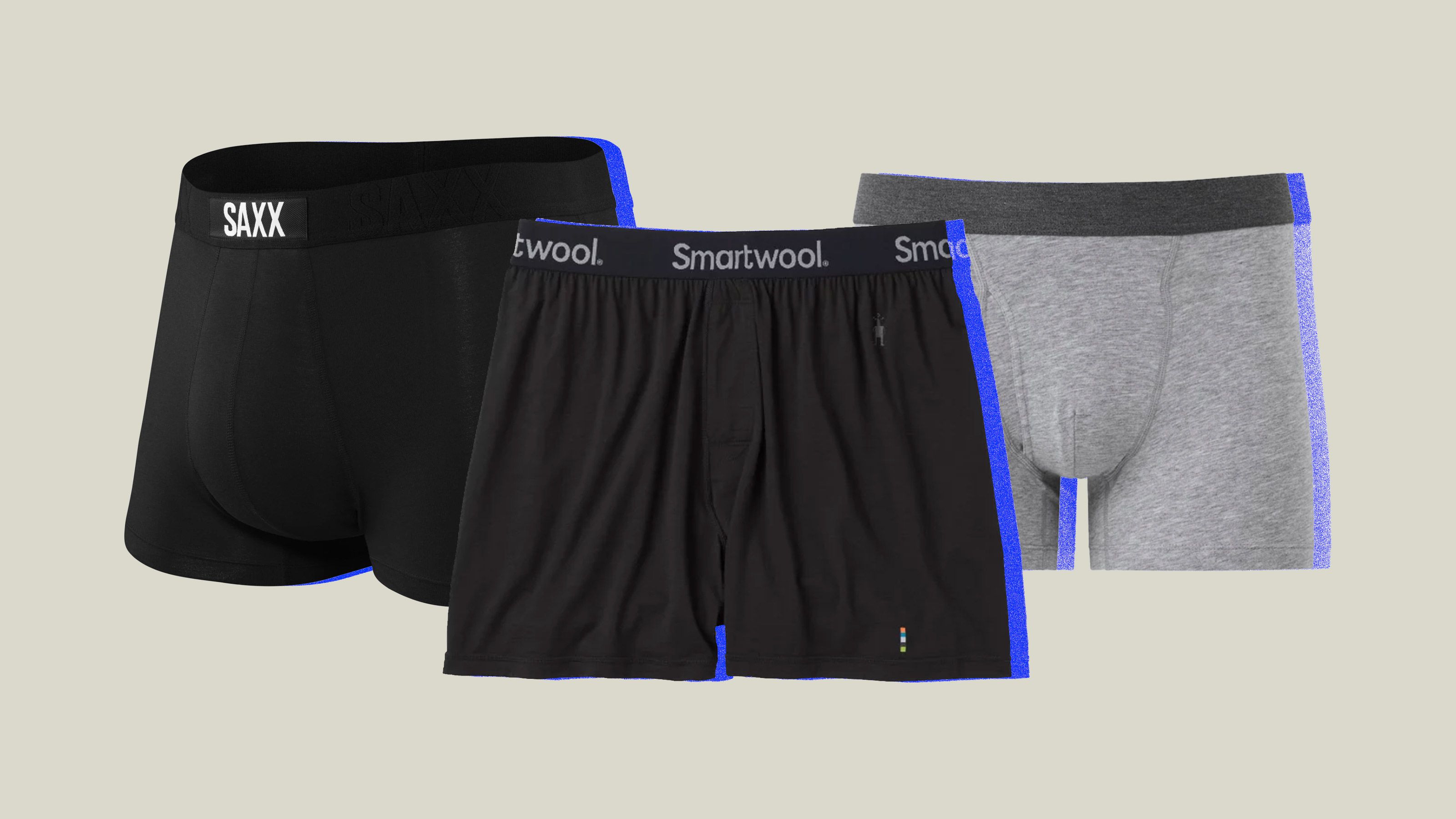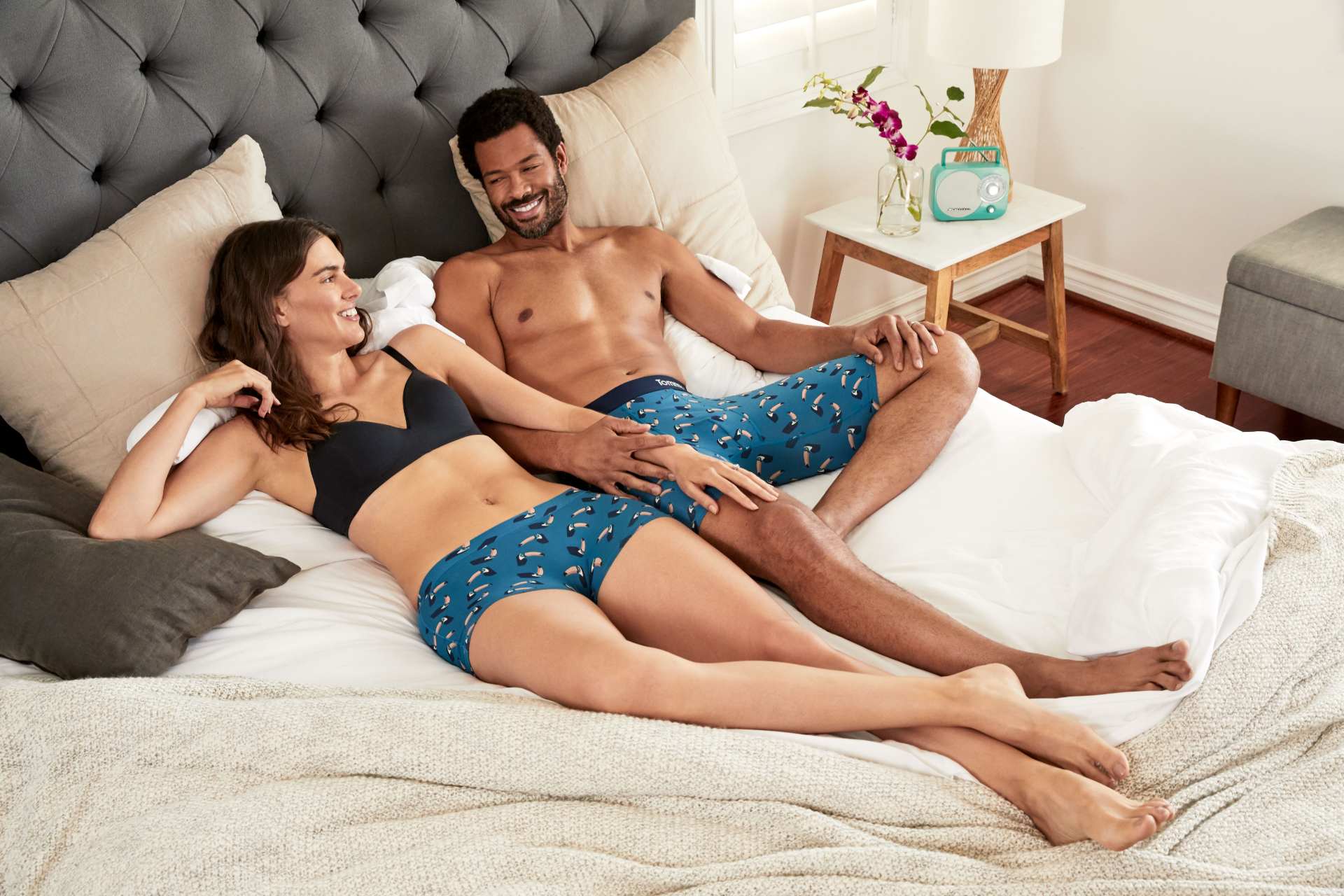Home>How-to Guides>For Men>How Should Underwear Fit For Men


For Men
How Should Underwear Fit For Men
Modified: August 2, 2023
Discover the perfect fit for men's underwear. Find out how to ensure comfort and support with our expert guide on how underwear should fit.
(Many of the links in this article redirect to a specific reviewed product. Your purchase of these products through affiliate links helps to generate commission for Under-tec.com, at no extra cost. Learn more)
Table of Contents
Introduction
Welcome to our comprehensive guide on how men’s underwear should fit! Whether you’re a man looking to upgrade your underwear game or someone shopping for the special men in your life, understanding the importance of a properly fitting pair of underwear is crucial. Beyond the style and design, the fit of the underwear can significantly impact your comfort, confidence, and overall well-being.
Many men may not realize the importance of a proper fit when it comes to their underwear. Ill-fitting underwear can lead to a range of issues, from discomfort and irritation to poor support and even potential health problems. It’s not just about choosing the right size, but also understanding how different styles, materials, and features can contribute to a comfortable and supportive fit.
In this article, we will explore the various aspects of men’s underwear fit and provide you with valuable insights to ensure you make the right choices. We’ll discuss how to measure for the perfect fit, explain the importance of waistband fit, leg openings fit, and crotch fit. We’ll also delve into the significance of material and stretch when it comes to finding the ideal pair of underwear. Additionally, we’ll look at the different styles available and how to choose the right one for your preferences and needs.
To help you recognize the signs of an ill-fitting pair of underwear, we’ll highlight common issues to be aware of. Finally, we’ll provide tips on maintaining a proper fit over time, as well as offer some concluding thoughts on the importance of investing in well-fitting men’s underwear.
Importance of Properly Fitting Underwear
When it comes to men’s underwear, getting the fit right is more than just a matter of aesthetics. It has a direct impact on your comfort, confidence, and overall well-being. Here’s why it’s important to wear properly fitting underwear:
- Comfort: One of the primary reasons for wearing underwear is to provide comfort and support. Ill-fitting underwear can cause chafing, irritation, and even pain. The right fit ensures that the fabric sits snugly against your skin without being too tight or too loose.
- Support: Properly fitting underwear provides the necessary support for your intimate areas, keeping everything in place. This is especially crucial during physical activities or for men with an active lifestyle. The right fit helps to minimize discomfort and provides better support for your groin and genitals.
- Confidence: When you’re wearing underwear that fits well, you’ll feel more confident throughout your day. You won’t have to constantly readjust or worry about discomfort, allowing you to focus on the tasks at hand. Feeling good in your underwear can have a positive impact on your overall self-esteem.
- Hygiene: Well-fitting underwear allows for proper airflow, reducing the risk of excess moisture and bacteria buildup. This can help prevent unpleasant odors and maintain better overall hygiene in your intimate area.
- Prevention of Health Issues: Wearing underwear that is too tight can cause constriction, leading to issues like reduced sperm count, lowered fertility, and increased risk of testicular torsion. On the other hand, excessively loose underwear may not provide the necessary support, which can result in discomfort and potential hernias. By wearing underwear that fits properly, you can minimize the risk of these health concerns.
Now that we understand the importance of properly fitting underwear, let’s dive into the specifics on how to measure for the perfect fit.
Measuring for the Right Fit
Before you start shopping for men’s underwear, it’s essential to measure yourself accurately to ensure a proper fit. Keep in mind that different brands may have slight variations in their sizing, so it’s always a good idea to refer to each brand’s specific size chart. Here are the key measurements you’ll need:
- Waist: Measure around your natural waistline, which is typically located just above your belly button. Make sure the measuring tape is snug but not too tight. Take note of the measurement in inches or centimeters.
- Hips: Measure around the fullest part of your hips, usually at the widest point of your buttocks. Again, ensure the tape measure is comfortable and not too tight. Note down the measurement.
Once you have your waist and hip measurements, you can use these numbers to determine your underwear size. Refer to the brand’s size chart and find the corresponding size based on your measurements. Remember to take into account any specific sizing recommendations provided by the brand, as different styles may have different fitting criteria.
It’s important to note that underwear sizes may vary depending on the country of origin, so it’s always a good idea to check if the brand’s sizing is based on a specific region’s standards.
Now that you have your measurements and know how to determine your underwear size, let’s move on to understanding the different aspects of underwear fit, starting with the waistband fit.
Waistband Fit
The waistband of your underwear plays a crucial role in providing a comfortable fit. It should sit securely around your waist without digging into your skin or feeling too loose. Here are a few key factors to consider when assessing the waistband fit of your underwear:
- Snugness: The waistband should have a snug fit, but not overly tight. It should stay in place without causing discomfort or leaving marks on your skin.
- Elasticity: Look for underwear with a waistband that has good elasticity. This allows the underwear to adapt to your body movements while maintaining a secure fit. A waistband that is too tight or lacks elasticity can cause discomfort and restrict movement.
- Width: The width of the waistband can also impact the overall comfort. A wider waistband can provide better support and distribute pressure evenly, reducing the likelihood of it digging into your skin.
- Maintenance: Consider the maintenance requirements of the waistband. Some underwear brands offer waistbands that are resistant to stretching or rolling, ensuring that they retain their shape wash after wash. This helps maintain a consistent and comfortable fit over time.
When trying on underwear, pay close attention to how the waistband feels against your skin. It should sit comfortably without causing any pinching or discomfort. Additionally, make sure that the waistband doesn’t leave deep imprints on your skin after removing the underwear, as this is a sign that it may be too tight.
Now that we’ve covered the waistband fit, let’s move on to exploring the importance of the leg openings fit.
Leg Openings Fit
The fit of the leg openings on your underwear is another critical aspect to consider for optimal comfort and support. Here are some key factors to keep in mind when assessing the leg openings fit:
- Snugness: The leg openings should have a snug fit around your thighs, without feeling too tight or constricting. They should stay in place throughout the day without riding up or causing discomfort.
- Elasticity: Look for underwear with leg openings that have a good amount of elasticity. This will allow them to stretch comfortably around your thighs while maintaining their shape and providing a secure fit. Underwear with leg openings that are too loose may ride up or bunch up, leading to discomfort and the need for constant adjustment.
- Length: Consider the length of the leg openings. They should provide adequate coverage and prevent any chafing or irritation. If the leg openings are too short, they may create a tight, uncomfortable fit. Conversely, if they are too long, they may bunch up and create unnecessary bulk.
- Seams: Pay attention to the seams of the leg openings. They should be smooth and flat, preventing any irritation or rubbing against your skin. Additionally, make sure there are no loose threads that could cause discomfort or snagging.
When trying on underwear, move around and perform some basic movements to ensure that the leg openings stay in place and provide the desired level of comfort and support. It’s important to find a balance where the leg openings are secure enough to prevent riding up but not so tight that they cut into your skin.
Now that we’ve covered the leg openings fit, let’s move on to discussing the importance of crotch fit in men’s underwear.
Crotch fit
The crotch fit of men’s underwear is a crucial aspect that directly affects comfort, support, and overall fit. Here are some key considerations when assessing the crotch fit:
- Roominess: The crotch area should provide enough room for your genitals to sit comfortably without feeling overly constricted or tight. It should allow for natural movement and ensure proper airflow for optimal comfort and hygiene.
- Support: Look for underwear with a crotch design that offers adequate support for your anatomy. The fabric in the crotch area should provide a supportive pouch or contouring that gives your genitals a secure and comfortable fit. This helps to prevent chafing, discomfort, and potential health issues.
- Seams: Pay attention to the seams in the crotch area. They should be flat and positioned in a way that minimizes friction and irritation. Irritating seams can lead to discomfort and rubbing, making your underwear less enjoyable to wear.
- Flexibility: Consider the flexibility of the fabric in the crotch area. It should be able to stretch and move with your body, allowing for ease of movement without feeling restrictive. This is particularly important for men who engage in physical activities or have an active lifestyle.
When trying on underwear, take note of how the crotch area feels. It should provide a supportive and comfortable fit that allows for natural movement without excessive compression. The fabric should contour to your anatomy without feeling restrictive or causing any discomfort.
Now that we’ve discussed the importance of crotch fit, let’s explore the significance of material choice and stretch in men’s underwear fit.
Material and Stretch
The choice of material and the level of stretch in men’s underwear can greatly affect its fit, comfort, and performance. Here are some key factors to consider when it comes to material and stretch:
- Comfort: Look for underwear made from soft and breathable materials, such as cotton or moisture-wicking fabrics. These materials provide comfort by allowing airflow and preventing excess moisture buildup. Additionally, consider the texture of the fabric to ensure it feels pleasant against your skin.
- Stretch: Opt for underwear that offers a good amount of stretch. The stretchability of the fabric ensures a flexible and comfortable fit that moves with your body. It allows for a wider range of motion and prevents constriction or discomfort during activities.
- Support: The material and stretch should offer adequate support for your intimate areas. Look for underwear with a supportive pouch or contouring design crafted from materials that hold their shape well. This helps to provide support and prevent shifting or sagging throughout the day.
- Durability: Consider the durability of the material. Look for underwear made from high-quality fabrics that can withstand frequent washing and maintain their shape over time. This ensures longevity and a consistent fit throughout the lifespan of the underwear.
- Moisture-wicking: If you lead an active lifestyle or tend to sweat excessively, consider underwear with moisture-wicking properties. These fabrics draw sweat away from your skin, keeping you dry and preventing discomfort caused by prolonged moisture exposure.
It’s important to find the right balance between comfort, support, and durability when choosing the material and stretch of your underwear. Consider your personal preferences, lifestyle, and any specific needs you may have to select the ideal fabric that suits you best.
Now that we’ve explored the significance of material and stretch, let’s move on to choosing the right style of men’s underwear.
Choosing the Right Style
When it comes to men’s underwear, there are numerous styles to choose from, each offering its own unique features and benefits. Here are some popular styles to consider:
- Briefs: Briefs are a classic and timeless style known for their full coverage and supportive fit. They typically have a higher waistband and provide excellent support for the front and back areas. Briefs are ideal for men who prioritize comfort, support, and a traditional look.
- Boxer Briefs: Boxer briefs combine the length and coverage of boxers with the snug fit of briefs. They offer support for the groin while providing additional coverage for the thighs. Boxer briefs are versatile and suitable for various activities, making them a popular choice among men of all ages.
- Boxers: Boxers are loose-fitting and provide maximum breathability and freedom of movement. They have an airy and relaxed fit and are ideal for men who prioritize comfort and prefer a looser style. However, keep in mind that boxers may not provide as much support as briefs or boxer briefs.
- Trunks: Trunks are a shorter version of boxer briefs, offering a snug fit and shorter leg length. They provide excellent support while maintaining a modern and stylish appearance. Trunks are a great option for men who want the support of boxer briefs but prefer a shorter silhouette.
- Jockstraps: Jockstraps are designed with a supportive pouch for the genitals and straps that go around the buttocks. They are commonly worn during sports or intense physical activities to provide additional support and protection.
When choosing the right style, consider your personal preferences, comfort needs, and the occasion or activity you’ll be engaging in. It’s also worth experimenting with different styles to find the one that fits you best and makes you feel confident and comfortable.
Now that we’ve discussed the different styles, let’s move on to the next section, which covers the signs of an ill-fitting pair of underwear.
Signs of an Ill-Fitting Underwear
Wearing underwear that doesn’t fit properly can lead to discomfort, irritation, and a lack of support. Here are some signs that indicate your underwear may not be fitting correctly:
- Pinching or Digging: If the waistband, leg openings, or seams are too tight, they may pinch or dig into your skin, causing discomfort and leaving marks.
- Riding Up: Underwear that constantly rides up or bunches up is a clear sign of an improper fit. This can lead to constant readjustment and discomfort throughout the day.
- Sagging: On the other hand, if your underwear is too loose, it may sag and not provide sufficient support. This can result in discomfort and a lack of confidence.
- Excess Fabric: Folded or bunched-up fabric in the crotch area or excess fabric around the waistband or leg openings indicates an ill-fitting pair of underwear.
- No Support: If your underwear doesn’t offer proper support for your genitals, it may lead to discomfort and a lack of security. This can be particularly noticeable during physical activities or when you’re on the move.
- Visible Panty Lines: If your underwear creates visible lines under your outer clothing, it may indicate that the fabric is too tight or the style is incompatible with the clothing you’re wearing.
- Constant Adjustments: If you find yourself constantly readjusting your underwear throughout the day to find a comfortable fit, it’s a sign that the underwear may not be the right size or style for you.
Paying attention to these signs will help you identify when it’s time to replace your underwear or explore different sizes or styles to find a better fit that suits your needs. Remember that comfort and support should be the top priorities when choosing underwear.
Now that we’ve covered the signs of an ill-fitting pair of underwear, let’s move on to the final section, which covers how to maintain a proper fit over time.
Maintaining Proper Fit over Time
To ensure that your underwear continues to provide a comfortable and proper fit, it’s important to follow these maintenance tips:
- Proper Washing: Follow the care instructions provided by the manufacturer to wash your underwear correctly. Use a gentle cycle and avoid using harsh detergents or bleach, as these can damage the fabric and elastic, leading to a compromised fit.
- Avoid Overstretching: When putting on or removing your underwear, be gentle and avoid excessive stretching. Pulling too hard on the waistband or leg openings can result in weakened elasticity and a looser fit over time.
- Avoid High Heat: Excessive heat, whether from tumble drying or ironing, can cause the elastic in your underwear to lose its elasticity. It’s best to air dry your underwear or use a low heat setting if necessary.
- Replace Worn-out Underwear: Over time, the fabric and elastic of underwear can wear out, resulting in a less supportive and comfortable fit. Keep an eye out for signs of wear and tear, such as stretched-out waistbands or thinning fabric, and replace your underwear as needed.
- Regularly Reassess Size: It’s essential to re-evaluate your underwear size regularly, as factors such as weight fluctuations or changes in body shape can impact the fit. Don’t hesitate to measure yourself again and try out different sizes or styles to ensure you’re wearing underwear that fits properly.
- Invest in Quality: Consider investing in high-quality underwear made from durable materials. Well-made underwear is more likely to maintain its shape and fit over time, ensuring that you can enjoy a comfortable and supportive fit for longer.
By properly caring for your underwear and regularly reassessing the fit, you can maintain a comfortable and supportive experience over time. Remember that a proper fit is crucial for your comfort, confidence, and overall well-being.
Now that we’ve explored how to maintain the proper fit of your underwear, let’s wrap up this comprehensive guide on men’s underwear fit.
Conclusion
Choosing the right fit of men’s underwear is essential for comfort, support, and overall well-being. Ill-fitting underwear can lead to discomfort, irritation, and even potential health issues. By understanding the importance of proper waistband fit, leg openings fit, crotch fit, as well as material and stretch, you can make informed decisions when selecting underwear that suits your needs.
Remember to measure yourself accurately to ensure a proper fit and consult each brand’s size chart for specific sizing guidelines. Look for underwear styles that prioritize comfort, support, and your personal preferences. Pay attention to signs of an ill-fitting pair, such as pinching, riding up, or sagging, and replace worn-out underwear as needed.
Maintaining a proper fit over time involves proper washing, avoiding overstretching and high heat, replacing worn-out underwear, and regularly reassessing your size. By following these maintenance tips and investing in high-quality underwear, you can enjoy a comfortable and supportive fit for longer.
Now armed with the knowledge of how men’s underwear should fit, you can make confident choices that prioritize your comfort and confidence. Don’t underestimate the impact of well-fitting underwear on your daily life. Take the time to find the perfect fit, and experience the difference it can make for you.










